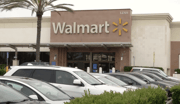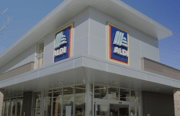Are you secretly paying these hidden fees every time you shop at Walmart, Target, or Costco?
By
Veronica E.
- Replies 0
Grocery shopping used to be straightforward—make a list, grab your bags, and head out the door.
But these days, many shoppers are noticing their receipts are a little longer and their wallets a little lighter.
If you’ve ever left Walmart, Target, or Costco wondering why your total was higher than expected, you’re not alone.
Hidden fees are quietly sneaking onto receipts, and most customers don’t even realize it’s happening.
At The GrayVine, we believe knowing where your money is going is half the battle.
Here’s what to watch for at these popular retailers—and how to keep more of your cash.

A recent AP-NORC poll found the average American spends about $235 a week on groceries, and more than half of us are stressed about rising prices.
But beyond inflation, some retailers are adding sneaky charges that quietly increase your bill.
1. Location-based surcharges – Shopping online from certain areas like Guam or Puerto Rico can trigger “location fees” of $17–$67 per item, often with little explanation.
2. Third-party shipping surprises – Walmart Marketplace sellers set their own rates, which can mean jaw-dropping shipping costs—sometimes as much as the product itself.
3. Self-checkout slip-ups – Scan-and-go errors have led to overcharges of $60 or more. Always check your receipt before leaving.
1. Public improvement fees – In some regions, Target adds a 1% fee for local infrastructure projects. It’s often buried in the fine print.
2. Hidden shipping and delivery charges – Large or bulky orders can rack up delivery fees of up to $200, even if you meet the free shipping minimum.
3. Overcharging at the register – Target has been fined for repeated price discrepancies. Shelf prices don’t always match what rings up.
1. Non-member surcharge – Non-members pay an extra 5% on most items, both in-store and online.
2. Overcharging errors – One shopper was accidentally charged 17 times for a $308 purchase—over $5,200 total—only catching it thanks to credit card alerts.
3. Delivery markups and service fees – Same-day delivery prices can be 15–20% higher than in-store, plus tips and service charges.
Source: Reddit / DrSpaceMechanic
Retailers know most shoppers focus on sale prices, not every line item.
Fees are often tucked into the fine print or appear at checkout, making them easy to miss—especially with online orders.
Many of these extra charges fly under the radar, especially when we’re in a hurry or used to trusting the final total.
By slowing down, reviewing your receipts, and staying informed about store policies, you can keep more of your money in your pocket.
After all, a little awareness at checkout can make a big difference over time.
Read next: Goodbye, hidden costs! Here’s how the latest federal rule will save you money on entertainment

Your voice matters – Have you spotted a hidden fee at Walmart, Target, or Costco? Did you find an overcharge at the register or a surprise fee online? Share your experiences in the comments—your tip could save another GrayVine reader from paying extra.
But these days, many shoppers are noticing their receipts are a little longer and their wallets a little lighter.
If you’ve ever left Walmart, Target, or Costco wondering why your total was higher than expected, you’re not alone.
Hidden fees are quietly sneaking onto receipts, and most customers don’t even realize it’s happening.
At The GrayVine, we believe knowing where your money is going is half the battle.
Here’s what to watch for at these popular retailers—and how to keep more of your cash.

Keeping a close eye on receipts can help spot small charges that add up over time. Image source: Pexels / Photo By: Kaboompics.com.
The true cost of convenience
A recent AP-NORC poll found the average American spends about $235 a week on groceries, and more than half of us are stressed about rising prices.
But beyond inflation, some retailers are adding sneaky charges that quietly increase your bill.
Walmart: The “everyday low price”... with extras
1. Location-based surcharges – Shopping online from certain areas like Guam or Puerto Rico can trigger “location fees” of $17–$67 per item, often with little explanation.
2. Third-party shipping surprises – Walmart Marketplace sellers set their own rates, which can mean jaw-dropping shipping costs—sometimes as much as the product itself.
3. Self-checkout slip-ups – Scan-and-go errors have led to overcharges of $60 or more. Always check your receipt before leaving.
Also read: New law cracks down on hidden rental fees—here’s what renters need to know
Target: Bullseye on your wallet
1. Public improvement fees – In some regions, Target adds a 1% fee for local infrastructure projects. It’s often buried in the fine print.
2. Hidden shipping and delivery charges – Large or bulky orders can rack up delivery fees of up to $200, even if you meet the free shipping minimum.
3. Overcharging at the register – Target has been fined for repeated price discrepancies. Shelf prices don’t always match what rings up.
Also read: Find out how T-Mobile may have tricked you with hidden fees for 20 years!
Costco: The price of bulk savings
1. Non-member surcharge – Non-members pay an extra 5% on most items, both in-store and online.
2. Overcharging errors – One shopper was accidentally charged 17 times for a $308 purchase—over $5,200 total—only catching it thanks to credit card alerts.
3. Delivery markups and service fees – Same-day delivery prices can be 15–20% higher than in-store, plus tips and service charges.
Source: Reddit / DrSpaceMechanic
Also read: Protect your 401(k) savings—these hidden fees could drain your retirement funds
Why these fees fly under the radar
Retailers know most shoppers focus on sale prices, not every line item.
Fees are often tucked into the fine print or appear at checkout, making them easy to miss—especially with online orders.
Also read: Overdraft alert: how the latest law will change fees at big banks—and how your account is affected
How to outsmart hidden fees
- Review before you pay – Whether online or in-store, double-check your total.
- Know store policies – Understand shipping, delivery, and membership charges.
- Scan your receipt – Spotting an error early makes it easier to fix.
- Set purchase alerts – Text or email alerts can catch duplicate or large charges.
- Dispute quickly – If the store won’t help, call your bank or credit card issuer.
- Do the membership math – Make sure it actually saves you money.
- Compare in-store vs. online – Delivery markups can make “deals” less of a bargain.
Many of these extra charges fly under the radar, especially when we’re in a hurry or used to trusting the final total.
By slowing down, reviewing your receipts, and staying informed about store policies, you can keep more of your money in your pocket.
After all, a little awareness at checkout can make a big difference over time.
Read next: Goodbye, hidden costs! Here’s how the latest federal rule will save you money on entertainment
Key Takeaways
- Shoppers at major US retailers like Walmart, Target, and Costco face hidden fees such as location surcharges, third-party shipping costs, and overcharges at self-checkout.
- Target and Costco customers have reported public improvement fees, non-member surcharges, and significant delivery markups.
- Many shoppers discover errors only after reviewing receipts or statements.
- To avoid extra costs, review totals before paying, know store policies, and contact customer service immediately about suspicious charges.
Your voice matters – Have you spotted a hidden fee at Walmart, Target, or Costco? Did you find an overcharge at the register or a surprise fee online? Share your experiences in the comments—your tip could save another GrayVine reader from paying extra.






